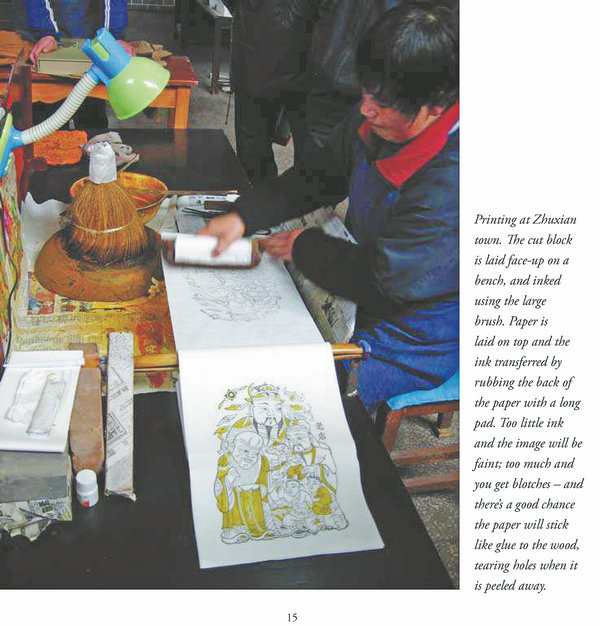

Artistic endeavor
In Paper Horses, his latest book, he shares his love of woodblock prints. The book provides an overview of prints of gods from North China from about 100 years ago, when the industry was in full swing.
At the time, almost every large town and city in the country was home to print shops where millions of the artifacts were effectively mass-produced every year. To send their wishes to the relevant deities, people either burned the hugely popular prints or hung them in strategic locations, imploring the gods to look kindly upon their endeavors and guarantee security, good fortune, full bellies and fruitful harvests among other things.
In part, the book was written as an attempt to quantify the author's knowledge of the topic, which he had gleaned from a variety of sources over many years.
"I had already been introduced to the confusing wealth of Chinese gods through the work of the late Keith Stevens in the UK, Ronni Pinsler — an avid collector of Chinese deity statues who lives in Malaysia and runs the website www.bookofxianshen.com — and the temples that I'd visited in China over the years," he says.
"But coming across an album of 80 deity prints a few years ago encouraged me to do my own research into specific gods so I could understand what I was looking at. It's an enormous subject, though, including a study of their overall history, the practical side of deity worship and folk ritual and religion, so I'll never get a handle on it all — mainly because so many other things about China interest me, too."
That wide-ranging interest is reflected in the articles he writes related to Chinese history that are posted on his website, www.davidleffman.com, and frequently published in newspapers and journals across the globe.
Leffman's previous book, The Mercenary Mandarin was a biography of William Mesny, a British adventurer who arrived in Shanghai as a penniless sailor in 1860 and went on to perform a wide number of jobs, including journalist, newspaper publisher, social chronicler, bridge designer (one of his creations remains in use today), customs inspector, hotelier and blacksmith. Eventually, and improbably, he became a general in the army of the Qing Dynasty (1644-1911), a position he used to travel extensively throughout China and visit the border areas with Siam (now Thailand) and Burma (now Myanmar).
Mesny was a fascinating character because, unusually for a European at the time, he spoke fluent Mandarin, had two Chinese wives (at different times, of course) and was genuinely untainted by notions of Western superiority. Moreover, he knew many of the leading figures of his day, including Zhang Zhidong, China's first industrialist, and was highly influential in the country's development at the time.
While he was working on the biography, Leffman followed Mesny's travel routes around China, and during the 15 years it took him to research and write the book, he was in prime position to notice the rapid pace of development. The improvements made his own journeys far easier than those of his subject, who endured desert heat, intense cold that left him with frostbite, poor food and even worse lodgings, all the while precariously perching his squat, ample frame on the back of a donkey as he crisscrossed the then-backward country.
"I have seen major changes in China on every trip since 1985, especially in the infrastructure. For instance, it used to take days to travel from Hong Kong to Guilin (in Guangxi), involving a slow train to Guangzhou (in Guangdong province), an overnight river ferry to Wuzhou, then an eight-hour country bus ride to Guilin. In 2019, I caught a direct train from downtown Hong Kong to Guilin in just 3.5 hours — less time than it used to take just to reach Guangzhou," Leffman notes.